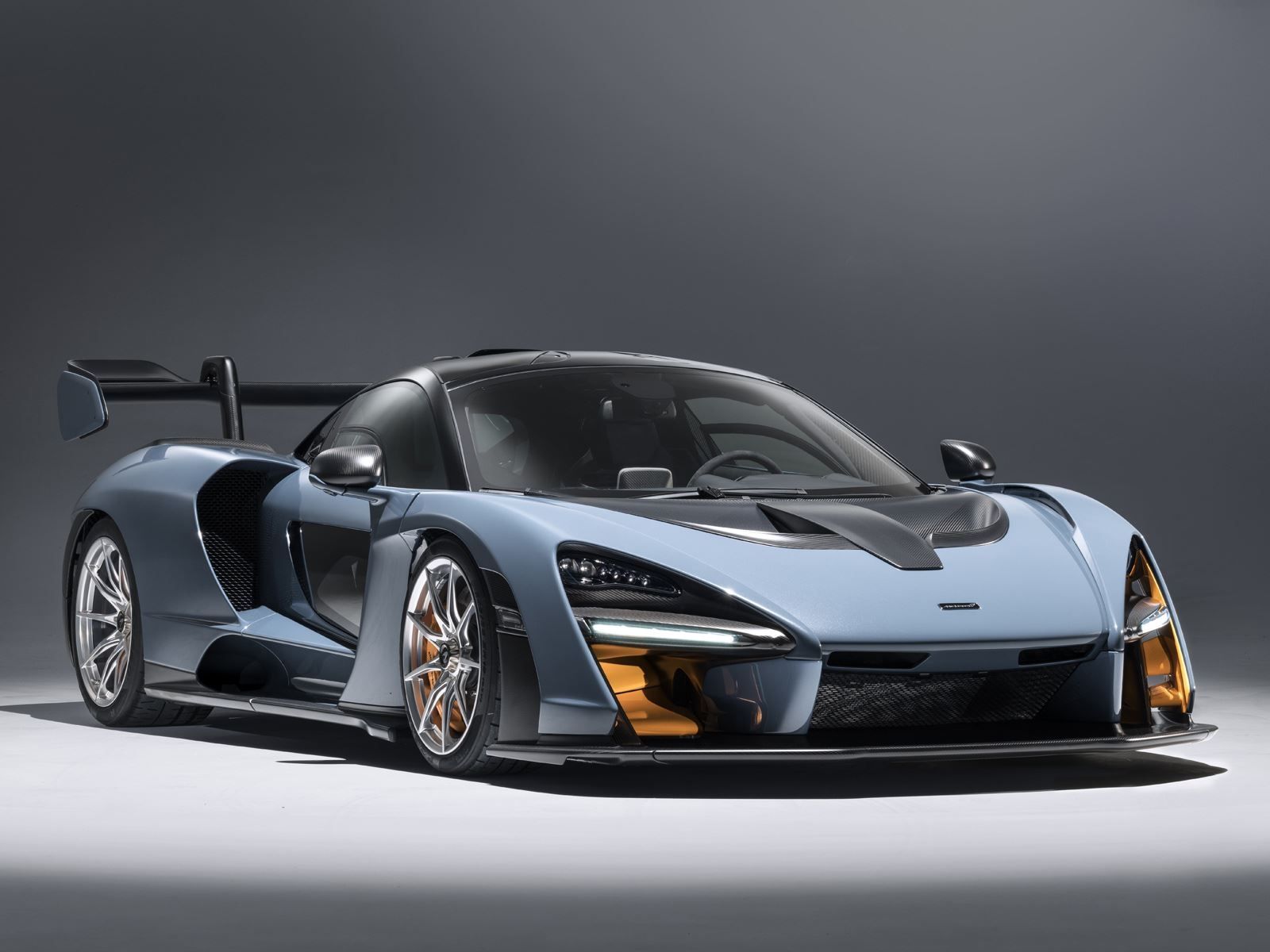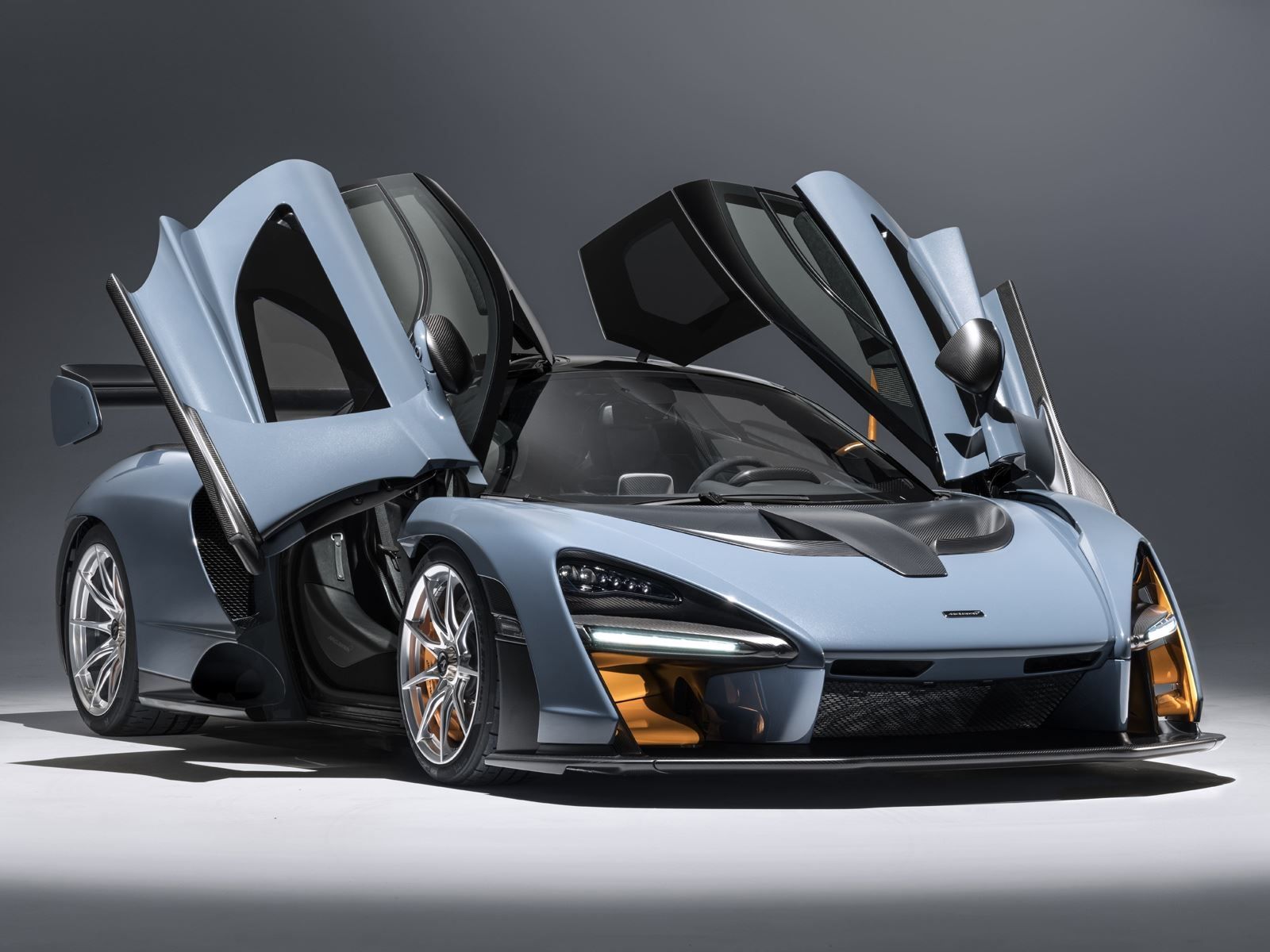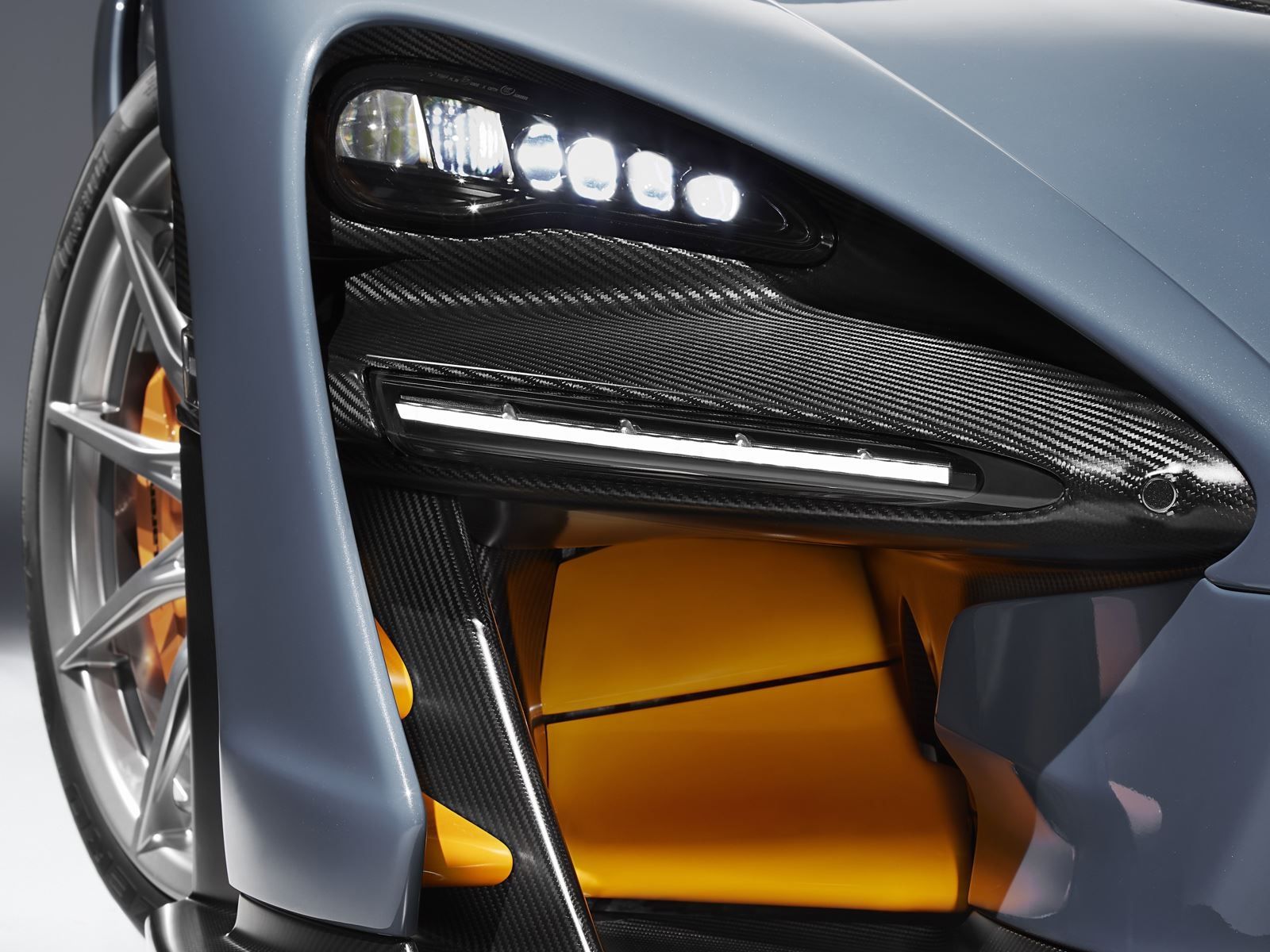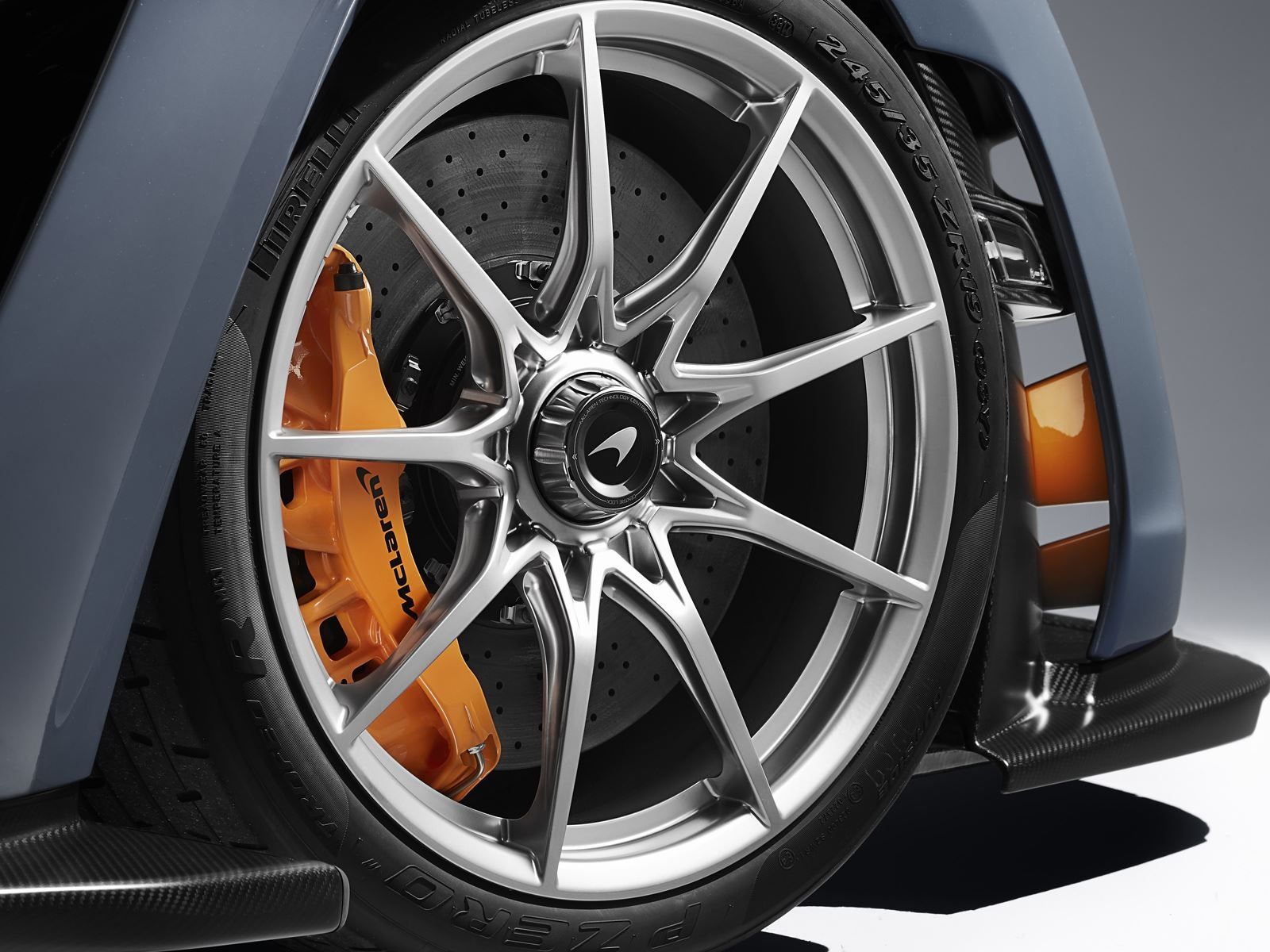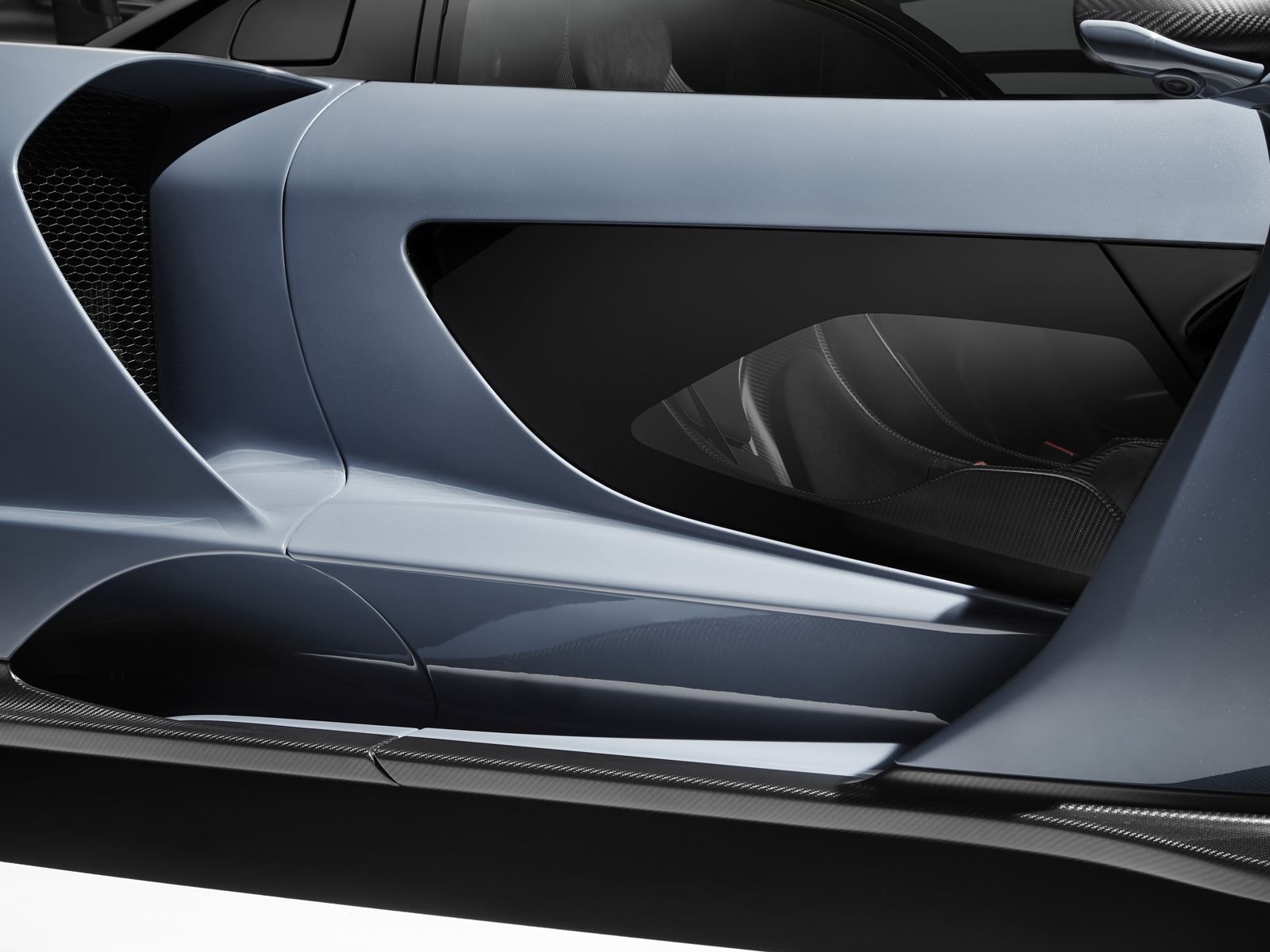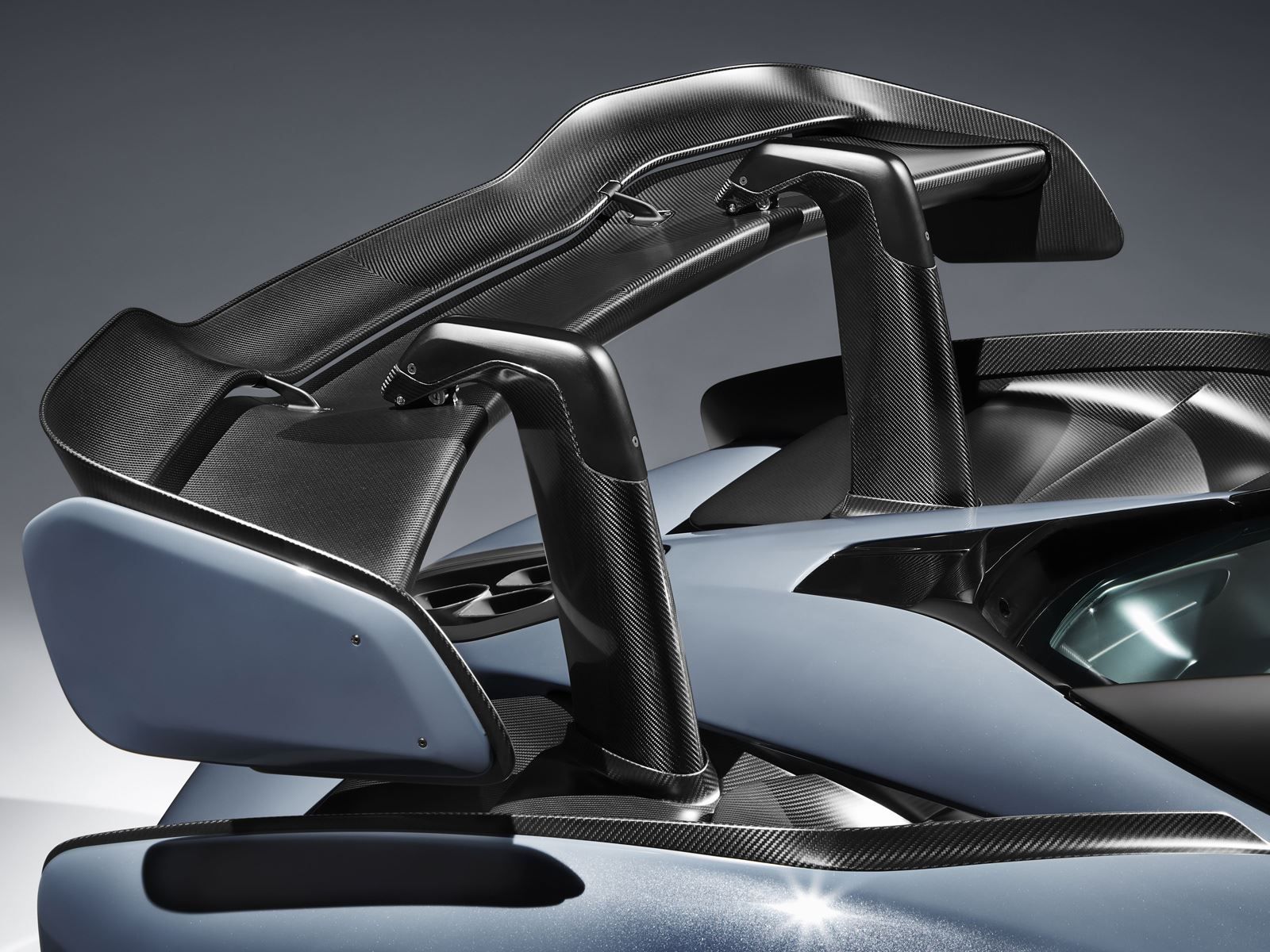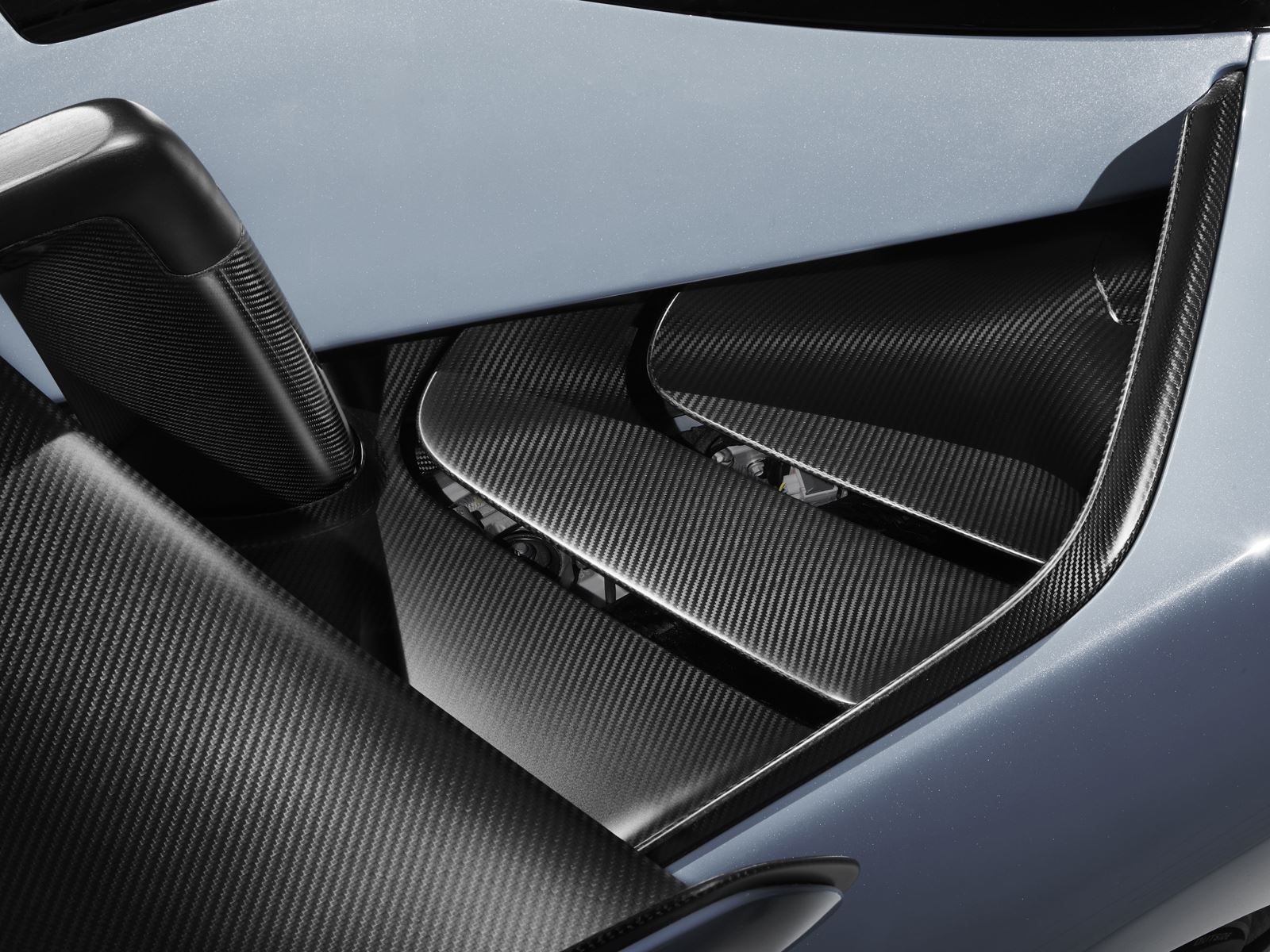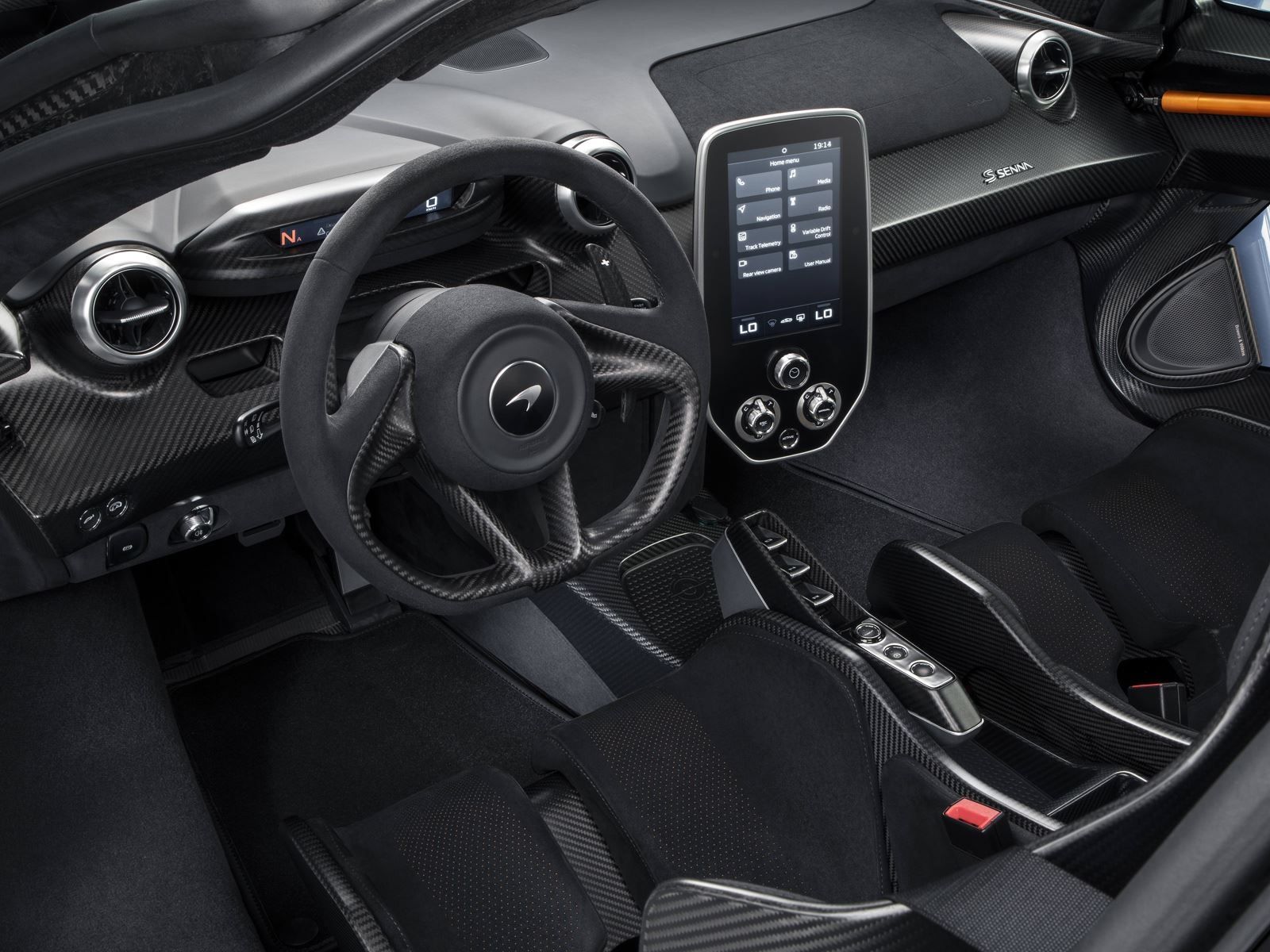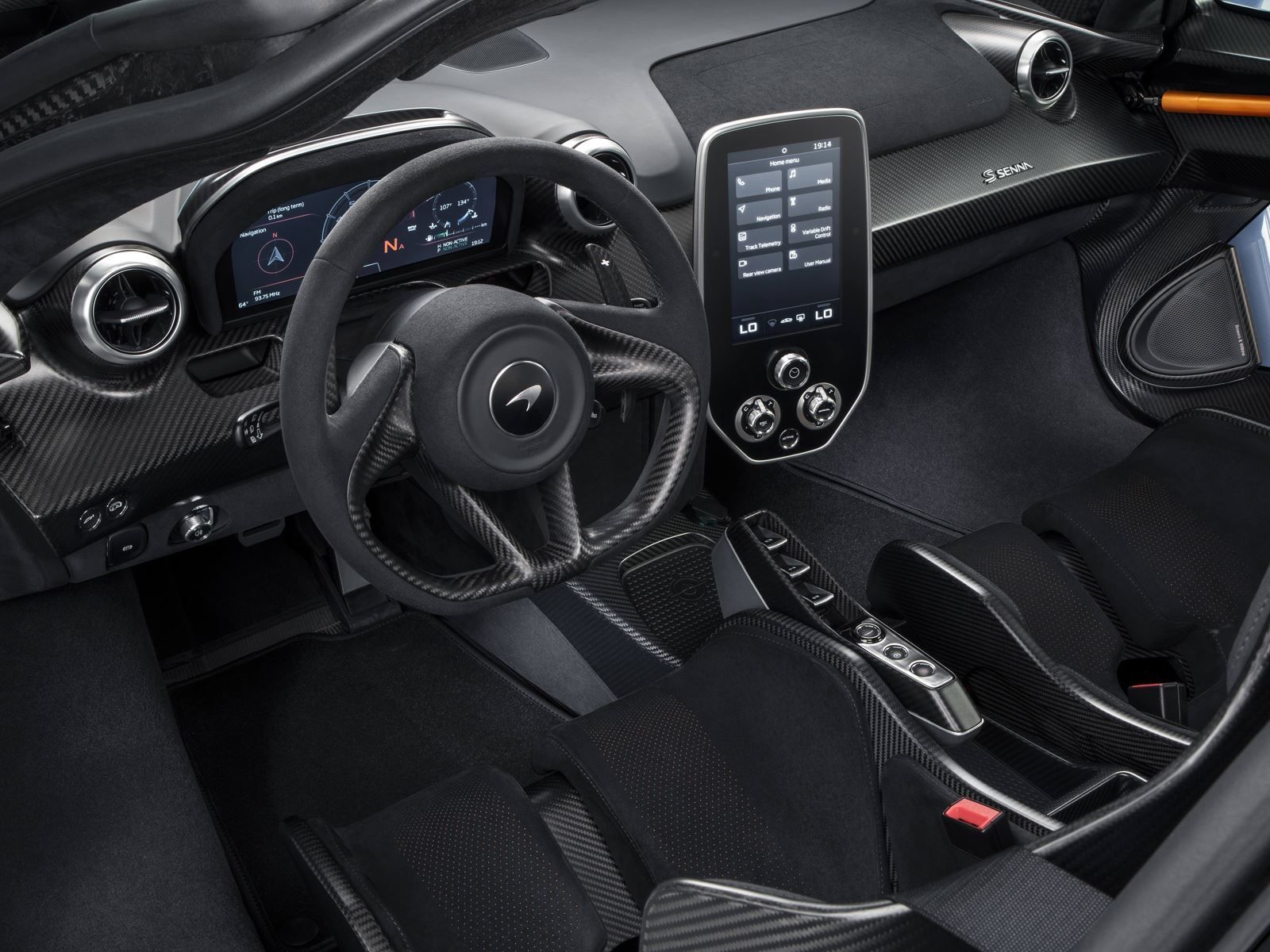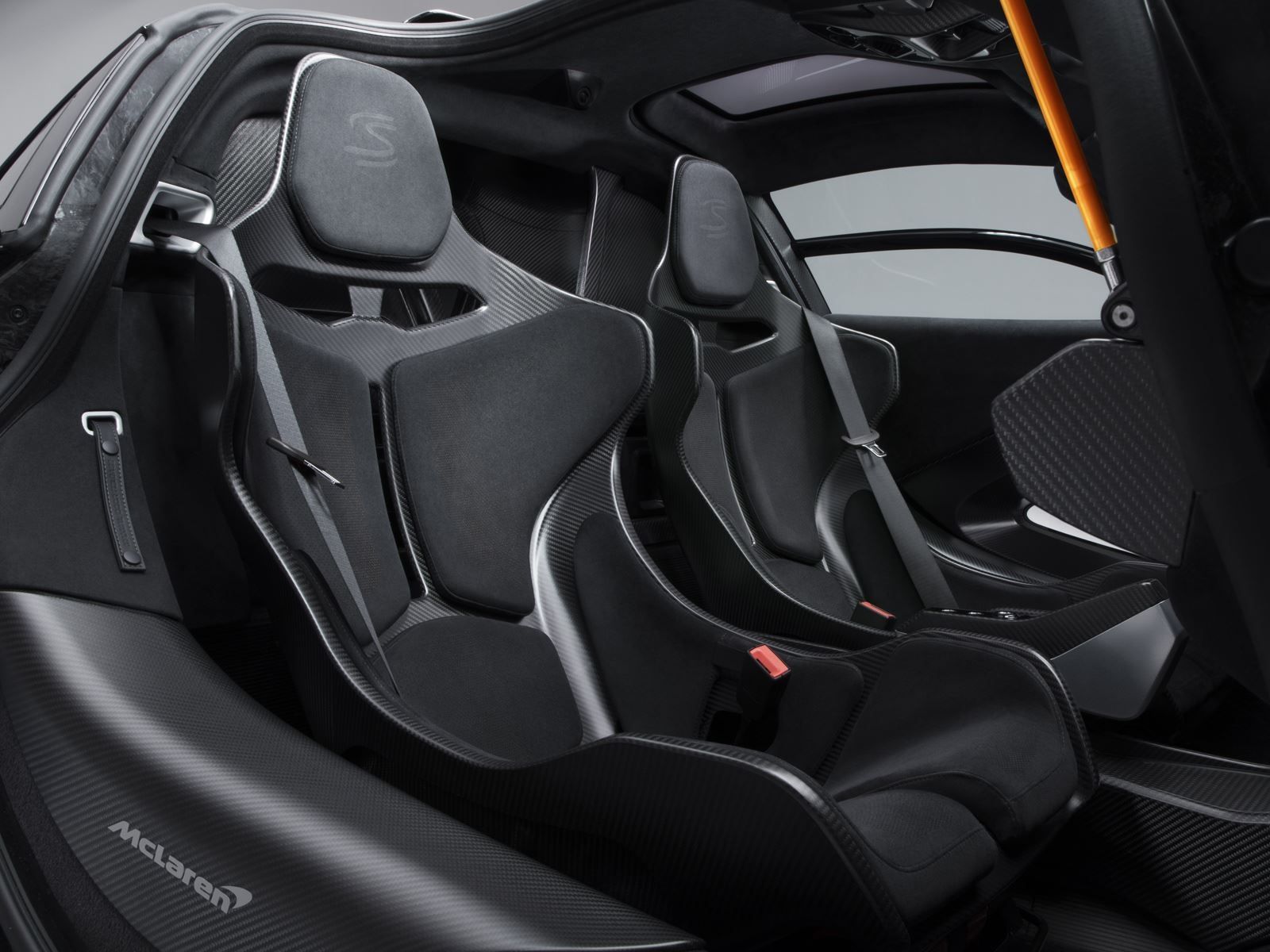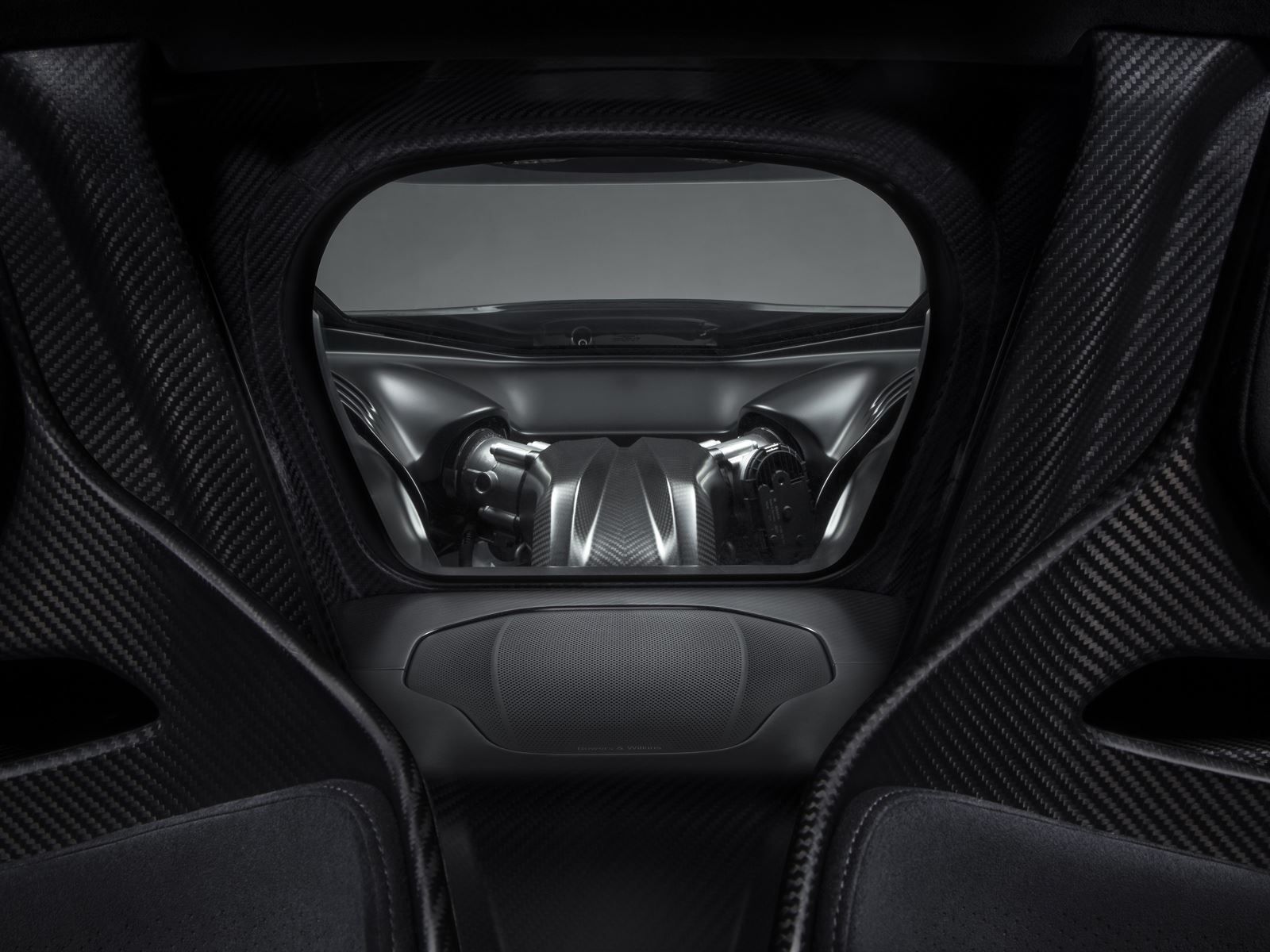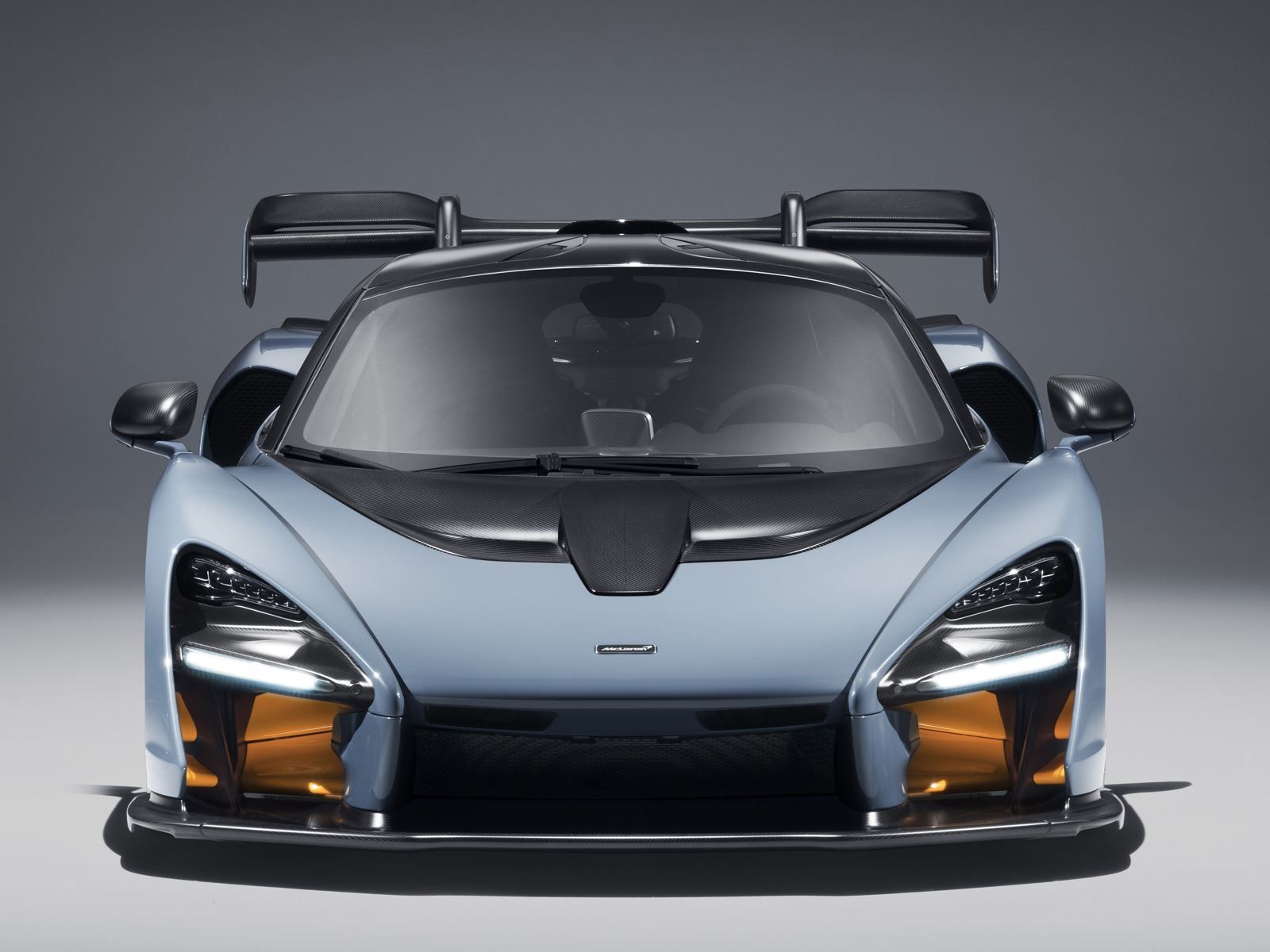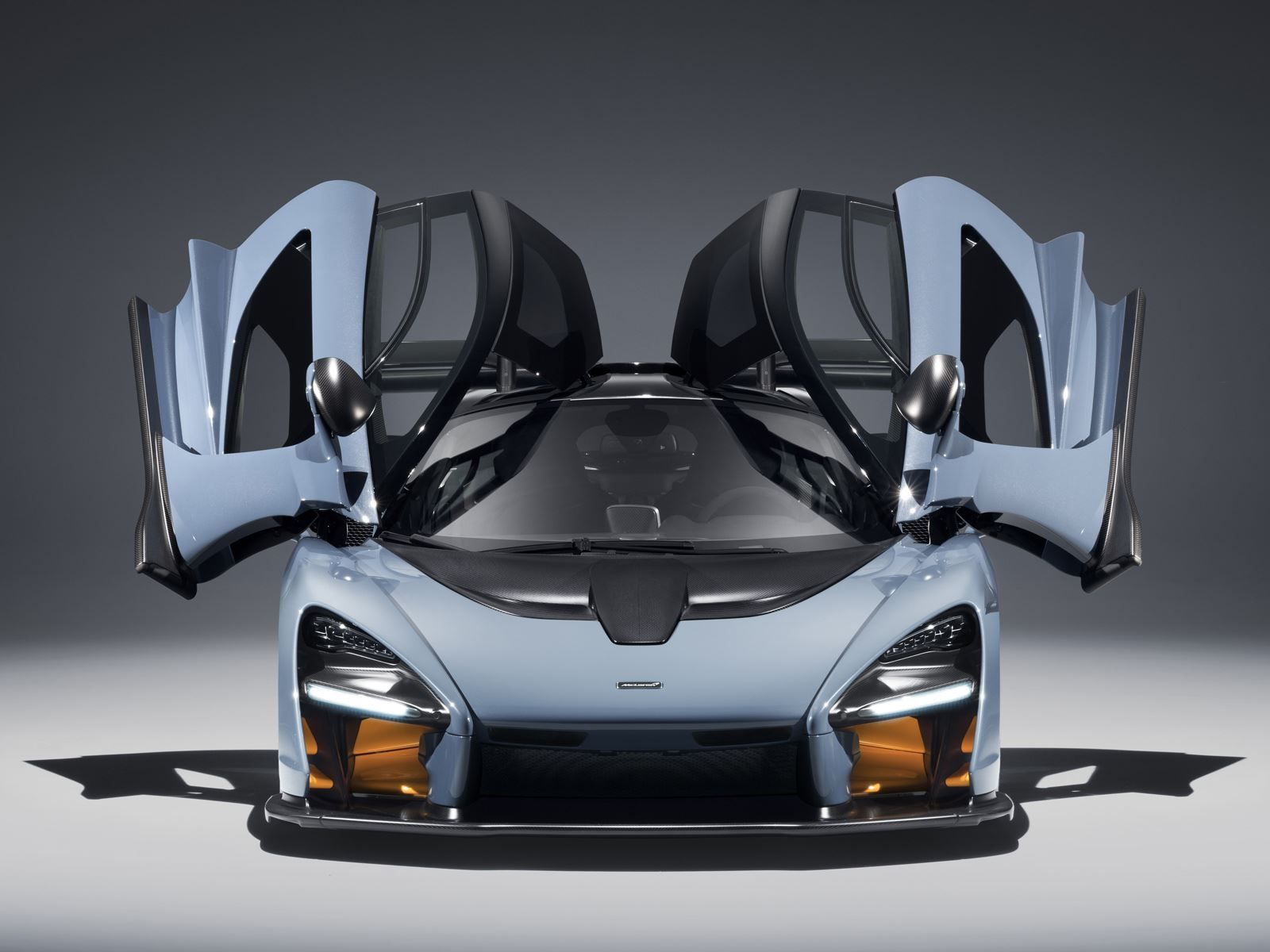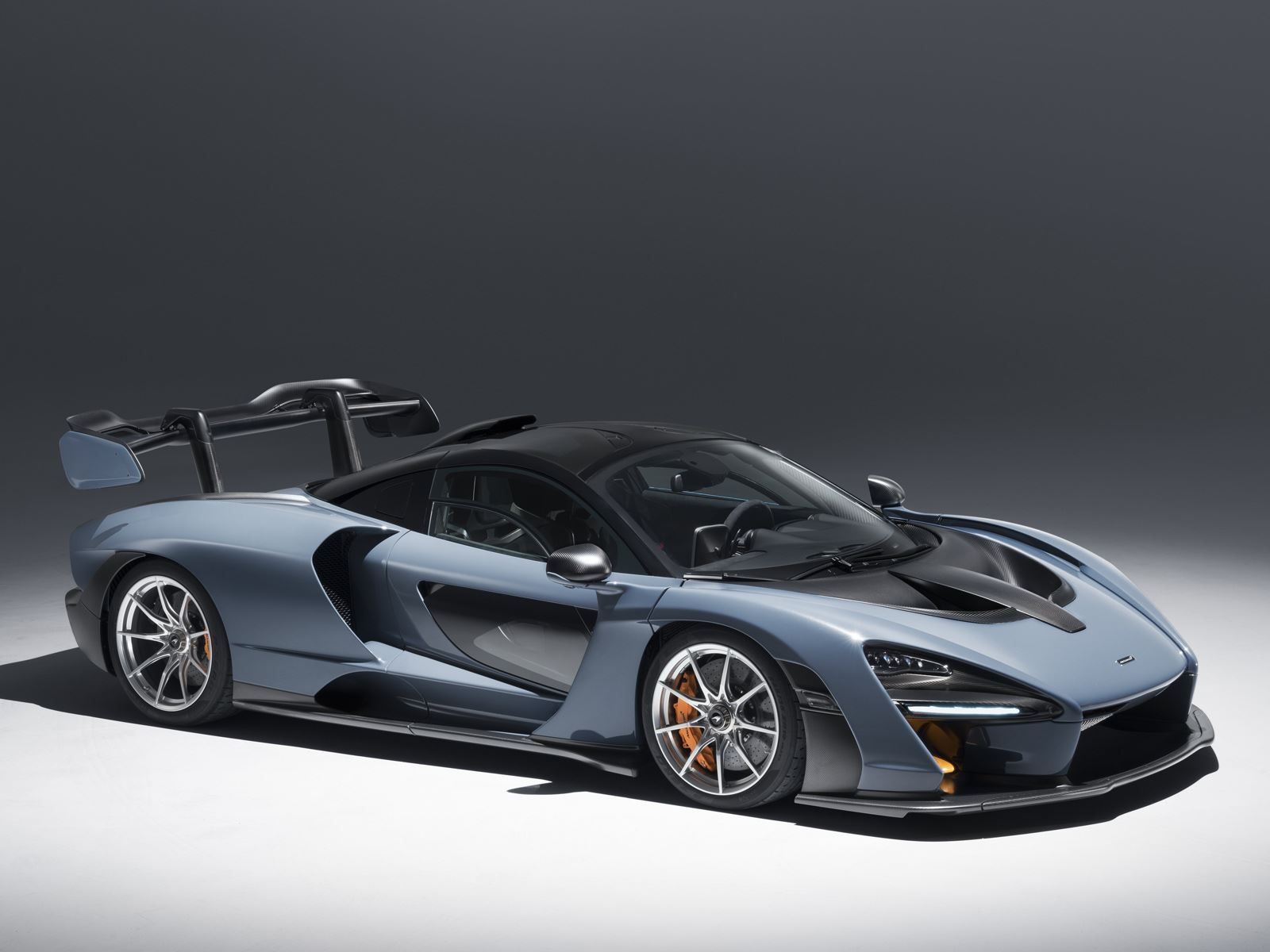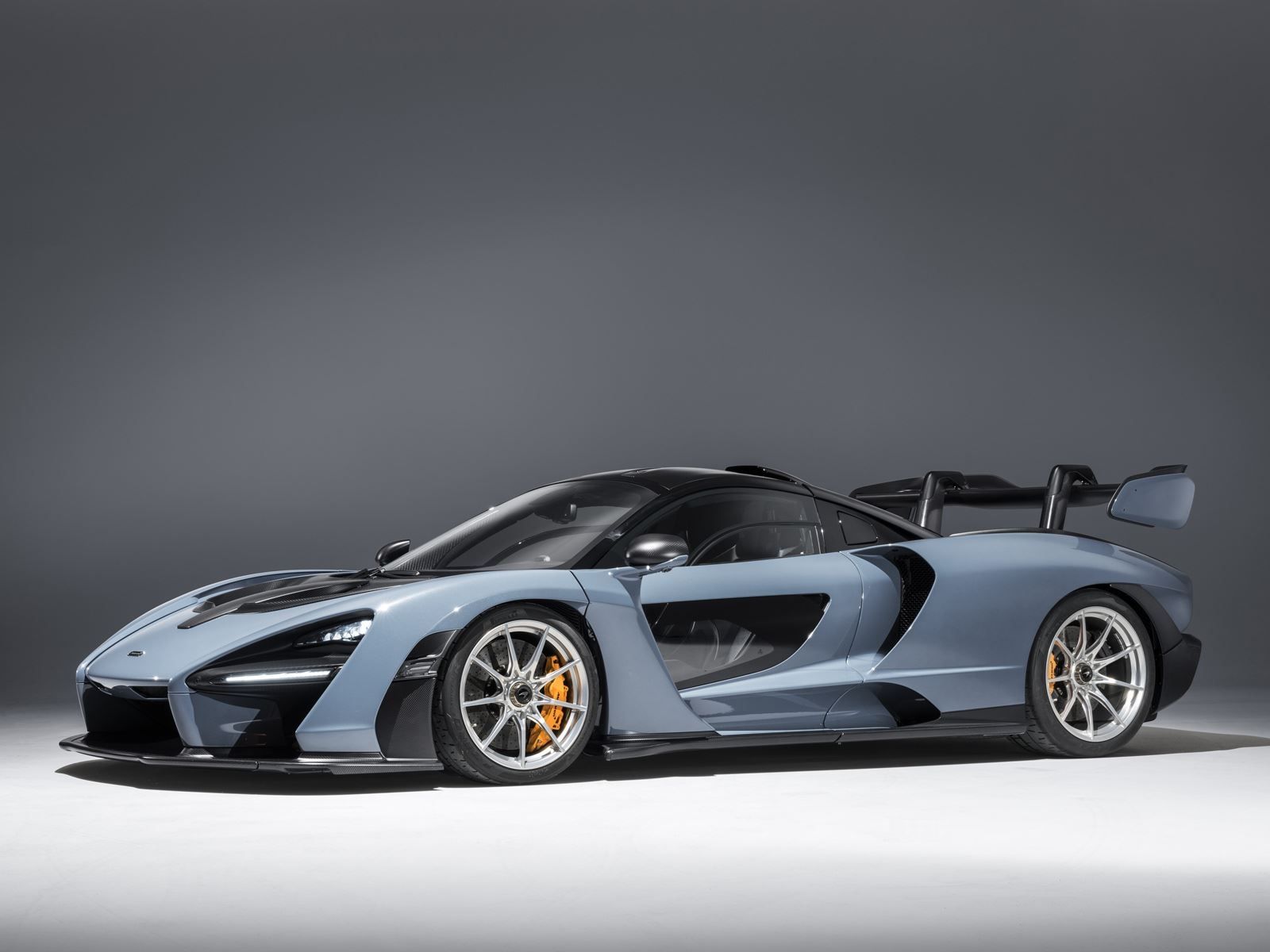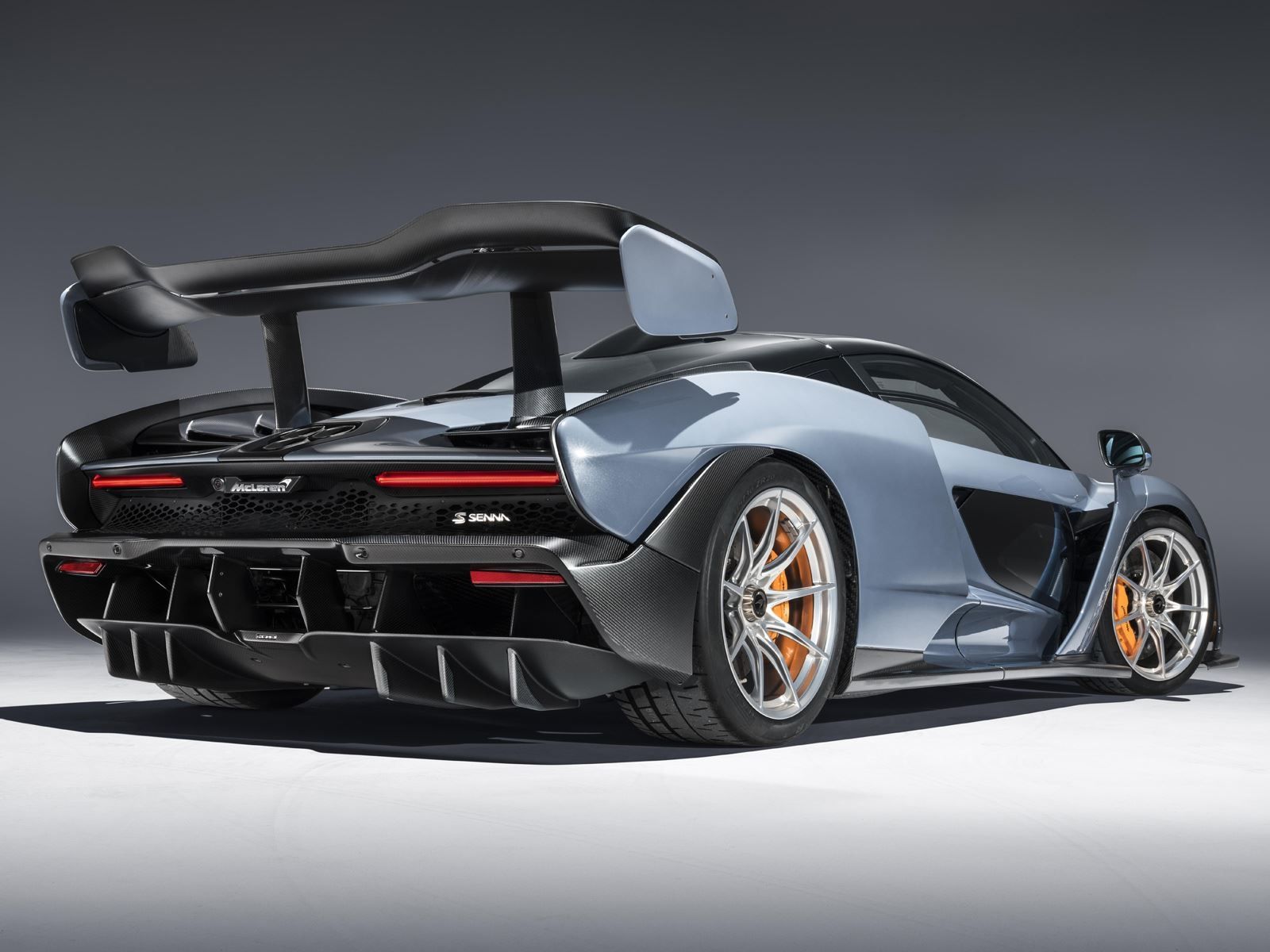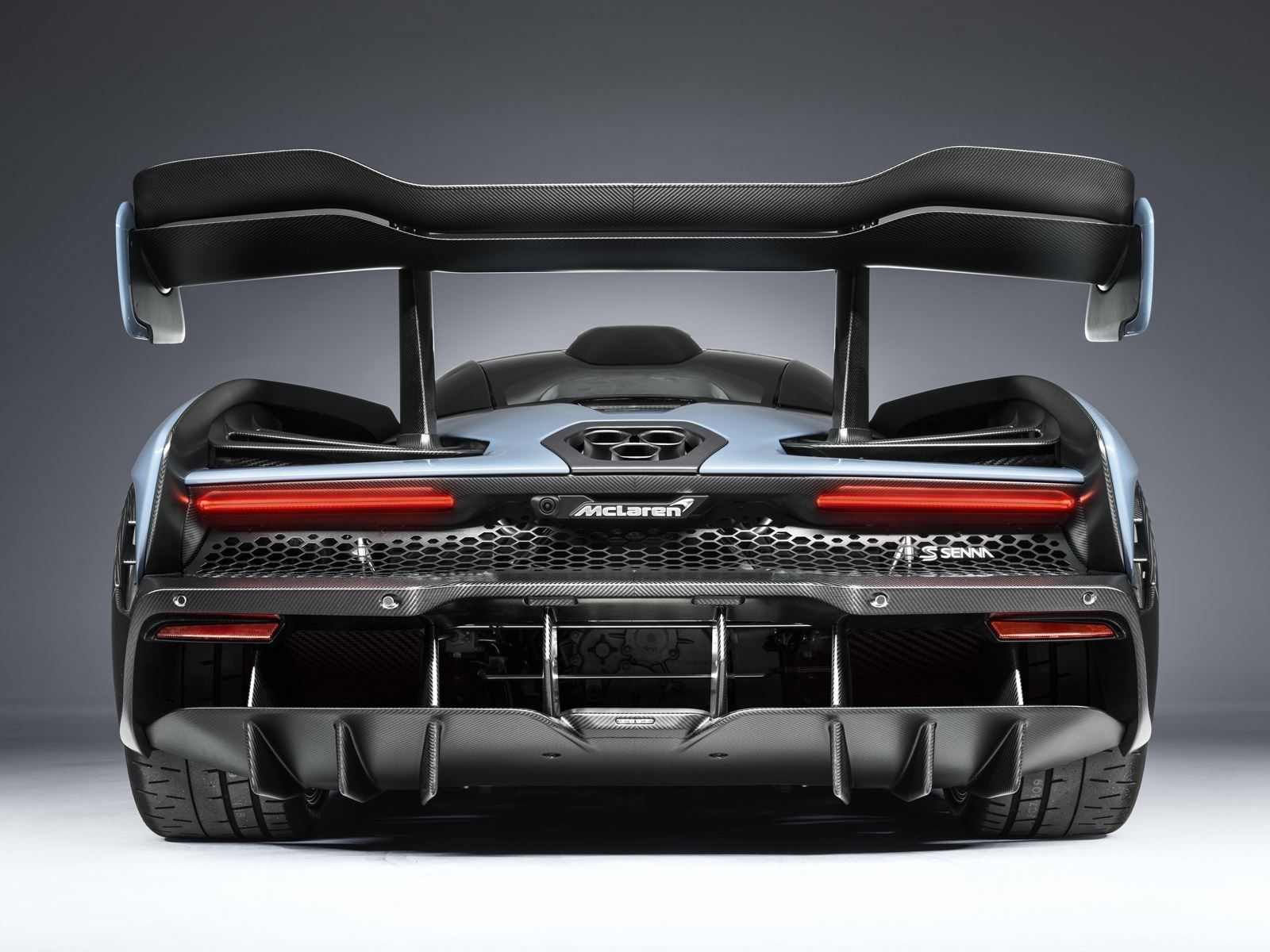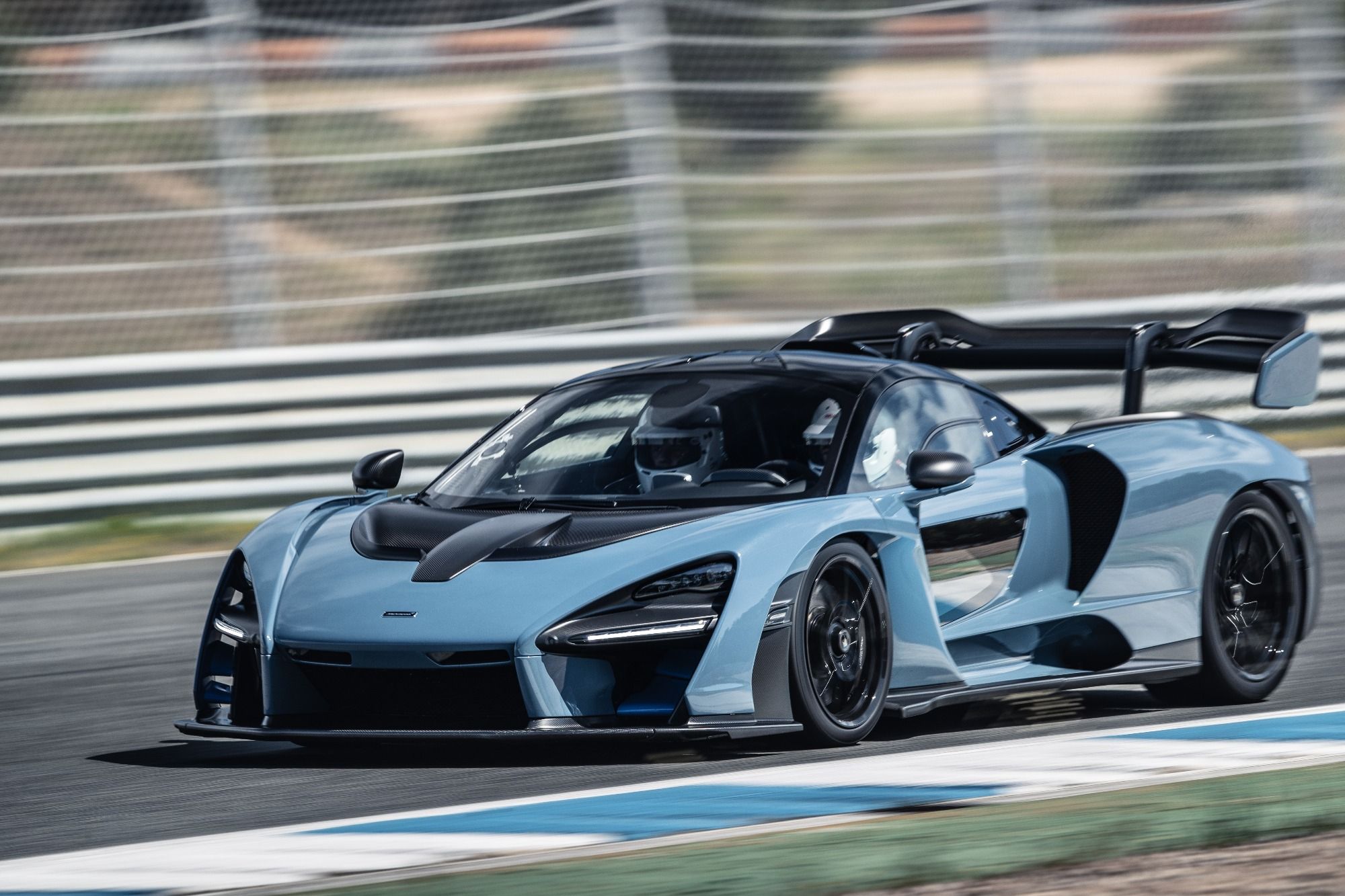
While the McLaren Senna may have been revealed last month, only now has the UK supercar company released even more performance specs and they're mighty impressive. Set to make its live debut next month at Geneva, the Senna is breathtakingly fast. McLaren claims a 0-60 mph time of 2.8 seconds and 0-124 mph in 6.8 seconds. Top speed is 211 mph. If that's not enough, it'll complete the standing quarter-mile in only 9.9 seconds. Power comes from a twin-turbo 4.0-liter V8 with 789 hp at 7,250 rpm and 516 lb-ft of torque from only 3,300 rpm.
A seven-speed dual-clutch gearbox sends all of that directly to the rear wheels. Total curb weight is only 2,641 pounds, thus creating a power-to-weight ratio of 659 hp per ton, hence the Senna's incredible acceleration and handling capabilities. From the moment you look at it, it's obvious the Senna was aerodynamically designed for speed. It is, after all, a street-legal track car. Starting at 155 mph, the active rear wing and front splitter generate 1,764 pounds of downforce. McLaren notes the rear wing weighs just 10.75 pounds but can support more than 100 times its own weight in downforce. The Senna is built on the Monocage III carbon fiber monocoque, the strongest ever made by McLaren for a road car.
The body panels can withstand immense structural rigidity to support the aerodynamic forces they are subjected to at high speeds on a race track. All told, these panels weigh less than 133 pounds. Both carbon fiber and Alcantara are in abundance throughout the interior. Like the exterior design, the interior look is that of a stripped-back, but functional nature. The dashboard, doors and visible elements of the Monocage II are all in exposed carbon fiber, while Alcantara covers the side airbags. Too much interior trim simply adds too much weight in the Senna' case. For example, the driver's seat moves on rails and the foot pedals are fixed.
However, if buyers so desire, so-called convenience features like parking sensors, a rear-view camera and a Senna-specific Bowers & Wilkins audio system are optional. Bear in mind that audio system does add 16.14 pounds. Limited to just 500 examples, all of which have been sold, each McLaren Senna costs $959,966, and that's without any specific requests. Each car requires a 300-hour hand assembly process. We'll have more details and plenty of live shots next month from Geneva.

